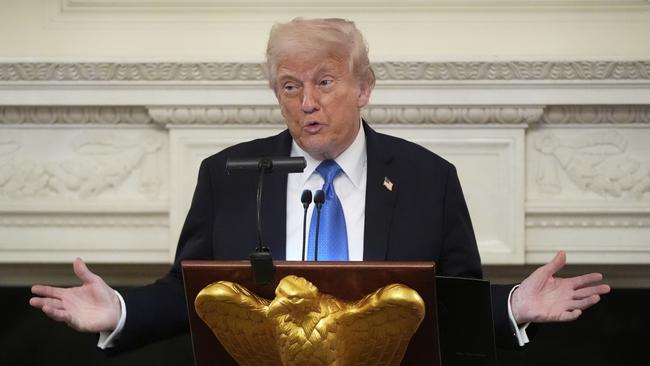
The Reserve Bank has basically blamed US President Donald Trump for downgrades to Australia’s economic growth, business investment, household expenditure and slightly higher unemployment.
Clearly, a lot of that blame is credible, but you have to wonder whether this just provides cover for the Albanese government’s management of the economy where government spending is at record highs, productivity is at decade lows, and real household income per capita is going backwards and among the worst in the OECD.
The RBA’s big collection of updated forecasts all seemed to focus on Trump and trade effects, barely mentioning the homegrown problems, until the bank was asked about it.
Governor Michele Bullock admitted that regardless of Trump the domestic situation warranted a rate cut.
“If you’d looked at what was happening domestically prior to this … I think gave the board enough that, absent the international evidence, there was a case to cut,” she said in her media briefing when asked specifically if conditions were such that a rate cut was needed even in the absence of the Trump effect.
The governor mentioned a still tight labour market: “I think on the domestic side, the thing that we are still grappling with is the labour market.”
Bullock also mentioned lower consumption: “Consumption, we’ve been a little bit surprised that consumption hasn’t recovered as real incomes have started to recover. It’s been just a bit softer than we thought it would be.”
But economists listening closely, such as Deloitte Access Economics’ Stephen Smith, suggested one area that could be lifted domestically that could help prevent the realisation of the bank’s downgrades to business investment, economic growth and slightly higher unemployment.
“RBA cuts rates – all eyes now on productivity,” Smith said. “Treasurer Jim Chalmers noted that a focus of the coming three years will ‘be primarily productivity without forgetting inflation’. The intention to focus on fixing Australia’s lacklustre productivity growth is welcome.”
Productivity is languishing at -1.5 per cent, according to the RBA’s own figures. The bank has forecast an optimistic growth rate in productivity of 0.9 per cent. Without it business will have to pay more in labour costs just to get the same amount of output.
Asked how the bank thought productivity could turn around Bullock admitted she didn’t actually know. “I think there’s enough to think there’s a great deal of uncertainty about productivity. I can’t tell you what’s going to turn it around,” she said. “What is the answer? I don’t know.”
While the bank’s key measure of underlying inflation is back within the target range again, Bullock also admitted there was a risk businesses might not be able to keep absorbing rising costs from rising energy prices (which are largely ignored by the bank because they are volatile) and less productive labour – wages growth is now above where the bank expects it to peak as productivity is falling. If businesses can’t absorb higher input costs, any more rises will have to be passed on to the consumer, who is already constrained by lower income.
“Is there a risk that some of these cost increases could feed back into inflation as the economy starts to recover? Yes, there is. But we’re judging that. The sign so far, and the evidence so far is that that’s not happening, but we’ll remain alert to it,” Bullock said.
Given the bank specifically said “we have made the judgment that global trade developments will overall be disinflationary for Australia”, then any restoking of inflation might have to be thought about from the perspective of what is going on domestically.
Maybe Australia ought to take a longer, harder look at itself before blaming everything on Trump’s extreme trade policies.



